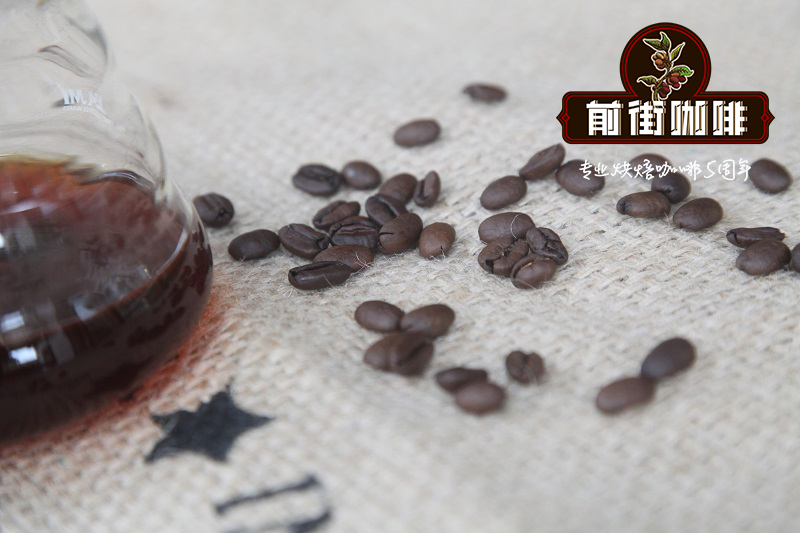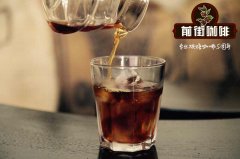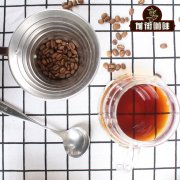How would you describe the taste of artisanal coffee Ye Jia Xuefei? Is Starbucks coffee good?

Professional coffee knowledge exchange more coffee bean information please follow the coffee workshop (Wechat official account cafe_style)
We often hear or see some special words when we buy coffee beans. Most of these words are used to help us understand the taste of coffee beans or the description of coffee taste in the area.
Coffee language
Consistency (Body):
It is to feel the thick and thick taste of the coffee after the entrance, the tactile impression of the tongue in terms of weight and quality, and the feeling of consistency can be as light as water, moderate as thick as thick soup and as thick as syrup.
Acidity (Acidity):
Acidity refers to a taste distributed on the back of the tongue, which is fresher, brighter and brighter than lemons and other acidity. Arabica coffee beans are usually grown at high altitude and high density, while low altitude Robusta coffee beans do not have this property.
Bitter (Bitter):
Bitterness is one of the four major tastes of coffee, usually due to the following five reasons:
Variety: Robusta is usually more bitter than Arabica.
Producing areas: generally produced in Sumatra, Indonesia, Java coffee bitterness is strong in other producing areas.
Baking degree: because the degree of caramelization and carbonization is heavy, deep roasting is more bitter than shallow roasted coffee beans.
Caffeine: Robusta is more bitter than Arabica because Robusta has twice as much caffeine as Arabica. Extraction time: the longer the extraction time, the more obvious the bitterness.
Gandhi (Sweet):
Describe the flavor of high-quality coffee: the taste is even, flawless and perfectly coordinated.
Aroma (Aroma):
Refers to the taste of finished coffee, used to describe the smell, including caramel, fruit, flower, rich, spicy, and so on.
Flavor (Flavor):
It is the overall impression of aroma, acidity and mellowness.
Strong:
Usually it refers to the strong flavor of coffee beans under the dark roasting method, which cannot be associated with a large amount of caffeine. In fact, the highest caffeine content is light canned coffee, because most of them contain a lot of high-caffeinated Robusta.
Xin lie (Tangy)
Is a description of coffee with a strong sour taste, between fruit acid and fermented fruit wine. Costa Rican high-end coffee grown in the highlands usually has a pungent flavor.
Salty (Briny):
It is usually overheated or because the beans themselves are so rich in minerals that they produce a salty taste.
Winy:
Similar to a slightly alcoholic smell, a comprehensive feeling of fruit-like acidity and well-balanced mellowness.
General cup test language
Cupping refers to the process of testing the quality of coffee and evaluating it. In the general test method, freshly roasted and freshly ground quantitative coffee powder should be put into a wide-mouth short test cup, smell dry aroma (dry fragrance) with nose, rinse hot hot water, rest for a few minutes, then press powder into the bottom of the cup with a spoon and smell wet aroma (wet aroma). Then use a special round silver-plated cup spoon to pick up some coffee liquid, sip it into the mouth, disperse it to the mouth, taste the original taste of the coffee carefully, and finally spit out the coffee in the mouth.
Black Beans (black bean):
Generally speaking, it is due to overheating, the harvest is too slow or too early and falls to the ground and mixes with it during harvest.
Black Jack (moldy bean):
Improper transportation and preservation make green beans from green to black, or even moldy or mixed with other items to catch its smell.
Brokens (chopped beans):
Improper handling in the process of peeling and screening led to the rupture of coffee beans.
Clean (clean beans):
Flawless high-end beans.
Color (color):
From dark green, yellowish green to brown, depending on the origin of coffee, new and old varieties, treatment process, maturity, storage and transportation.
Defects (defective beans):
Including seashells and mutated beans.
Fine (preferred beans):
Beans suitable for making high-quality coffee.
Flat (flat beans):
Lack of acid, lifeless beans.
Full (full beans):
This title only belongs to beans with good sour taste and rich characteristics, with obvious and strong characteristics.
Grassy (grass bean):
Beans with a unique and strong grass-like flavor generally belong to the flavor of the precocious Arabica.
Hard bean (hard beans):
Planted in the highlands, mild texture, slow growth period, unique characteristics, suitable for roasting into first-class coffee beans.
Muddy (dirty beans):
Beans with a monotonous texture.
Pointed (sharp):
Described as having a sharp sour taste of good quality.
Rich (fat beans):
Beans that are vibrant and full of flavor.
Screen (screening Network):
A mesh tool used to classify the size of raw bean particles.
Smooth (mild beans):
Coffee that is good in texture but lacking in acid.
Thin (Bean):
Monotonous, lack of vitality, weak texture and lack of acid coffee, sometimes due to insufficient extraction.
Unwashed (dried beans):
After the fruit is harvested, the peel should be removed, and the pulp and silver skin can be shipped to market. There are two methods: 'washing type' and 'drying type'. The coffee beans treated by drying natural drying method are dried beans.
The quality of coffee was evaluated by 'cup test':
In the coffee raw bean market, it takes years of accumulation and training to evaluate and select raw beans suitable for making high-grade coffee. Experts in the process of evaluating the quality is called cupping. The traditional cup testing method is suitable for coffee merchants to continuously taste a large number of coffee samples in a short period of time, which needs to be practiced, otherwise it is easy to drink coffee powder in the cup testing process. There are three main standard bases for evaluating quality by cup method:
1. Aroma (Aroma)
two。 Texture (Body)
3. Taste (Flavor)
10 steps of cup test:
1. Prepare a little freshly roasted and immediately ground coffee in a small cup.
two。 Smell it and see its dry fragrance.
3. Pour in hot water of about 95 degrees C. do not pour in immediately after boiling. Leave for about half a minute until the temperature drops slightly, then pour in the coffee powder.
4. Take a closer look at the aroma coming from the rising steam.
5. Leave the cup sample for 3-5 minutes and then stir with a long spoon.
6. Stir while smelling and evaluating the aroma and concentration of the steam.
7. Pick up the coffee grounds floating on the surface and throw them away.
8. Scoop a tablespoon of coffee without residue into the mouth and sip it straight to the root of the tongue. Love the smell. Don't swallow it. Let the coffee flow in the mouth and feel the consistency of the tongue. Whether the taste is still strong before swallowing it into the throat.
9. Slide your tongue onto the upper edge of your mouth to feel its texture and taste.
10. Stay in the mouth for 3-5 seconds and then spit it out, and whether the aftertaste remains, or even turn sweet.
Important Notice :
前街咖啡 FrontStreet Coffee has moved to new addredd:
FrontStreet Coffee Address: 315,Donghua East Road,GuangZhou
Tel:020 38364473
- Prev

How to describe the taste of coffee to make it look like a literary and artistic style? There is even a human analogy operation?
Professional coffee knowledge exchange more coffee bean information Please follow the coffee workshop (Wechat official account cafe_style) the boss accidentally bought brother coffee beans, the guests have to drink the coffee sold by the brothers. The turtle beans of Galapagos are so full that they can stand even after drinking a glass of Panamanian geisha
- Next

The special noun of coffee flavor wheel you should know before drinking boutique coffee
Professional coffee knowledge exchange more coffee bean information please follow the coffee workshop (Wechat official account cafe_style) coffee fans need to know! Special terms to know before drinking boutique coffee each major has its own language. If you want to enter the world of boutique coffee, first know from which aspects you can taste it. If you want to enter the world of boutique coffee, you must first understand coffee.
Related
- Beginners will see the "Coffee pull flower" guide!
- What is the difference between ice blog purified milk and ordinary milk coffee?
- Why is the Philippines the largest producer of crops in Liberia?
- For coffee extraction, should the fine powder be retained?
- How does extracted espresso fill pressed powder? How much strength does it take to press the powder?
- How to make jasmine cold extract coffee? Is the jasmine + latte good?
- Will this little toy really make the coffee taste better? How does Lily Drip affect coffee extraction?
- Will the action of slapping the filter cup also affect coffee extraction?
- What's the difference between powder-to-water ratio and powder-to-liquid ratio?
- What is the Ethiopian local species? What does it have to do with Heirloom native species?

